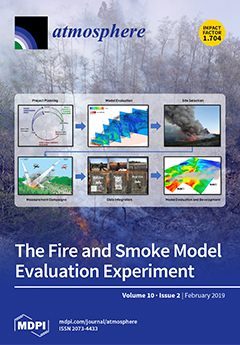To track the particulate pollution in Sichuan Basin, sample filters were collected in three urban sites. Characteristics of water-soluble inorganic ions (WSIIs) were explored and their sources were analyzed by principal component analysis (PCA). During 2012–2013, the PM
2.5 concentrations were 86.7 ±
[...] Read more.
To track the particulate pollution in Sichuan Basin, sample filters were collected in three urban sites. Characteristics of water-soluble inorganic ions (WSIIs) were explored and their sources were analyzed by principal component analysis (PCA). During 2012–2013, the PM
2.5 concentrations were 86.7 ± 49.7 μg m
−3 in Chengdu (CD), 78.6 ± 36.8 μg m
−3 in Neijiang (NJ), and 71.7 ± 36.9 μg m
−3 in Chongqing (CQ), respectively. WSIIs contributed about 50% to PM
2.5, and 90% of them were secondary inorganic ions. NH
4+ and NO
3− roughly followed the seasonal pattern of PM
2.5 variations, whereas the highest levels of SO
42− appeared in summer and autumn. PM
2.5 samples were most acidic in autumn and winter, but were alkaline in spring. The aerosol acidity increased with the increasing level of anion equivalents. SO
42− primarily existed in the form of (NH
4)
2SO
4. Full neutralization of NH
4+ to NO
3− was only observed in low levels of SO
42− + NO
3−, and NO
3− existed in various forms. SO
42− and NO
3− were formed mainly through homogeneous reactions, and there was the existence of heterogeneous reactions under high relative humidity. The main identified sources of WSIIs included coal combustion, biomass burning, and construction dust.
Full article


